The world of recruitment gets smarter by the day, with numerous new tools backed by data science to measure every single step of the process. Ultimately enabling you to hire better people more quickly and for less money.
Analytics for recruitment is a key part of the hiring process because only by understanding your numbers can you refine and improve. Everything from the initial screening all the way down to the final interviews is ripe for optimization.
Let’s dig in!
TL;DR – Key Takeaways
Recruitment analytics is the practice of measuring, tracking and analyzing key HR metrics across the entire recruitment funnel, from placing job ads to attracting candidates to exit interviews when employees leave.
There are eight different types of recruitment analytics, which include descriptive, predictive, and prescriptive analytics, talent acquisition, employee engagement, retention, and more. Ultimately, a mix is required to optimize recruiting efforts.
Data and analytics play an important role in recruitment, helping to drive greater efficiencies across key metrics such as quality of hire and employee retention, but also to meet key HR goals, such as less hiring bias and better predictive analytics.
You can measure and track countless data points as a hiring manager. What’s important is to first identify which metrics to focus on, such as quality of hire, cost per hire, time to fill, etc., and then identify the best solution to track it.
There are a number of tools on the market to help you analyze and optimize your recruiting efforts: from all-in-one HRIS tools to applicant tracking systems, skills assessment, performance management tools, feedback surveys, time and attendance systems, you name it. Choose the right tools for you based on your needs and budget.
Skills assessments by Toggl Hire help hiring teams get a head start by significantly reducing the time and money spent on pre-screening applicants. And are also a great way to reduce unconscious bias in your hiring process by testing skills before reading CVs.
What exactly is analytics for recruitment?
Recruitment analytics refers to the process of measuring, tracking, and analyzing any kind of data relating to your company’s hiring process. It involves collecting and interpreting data from various sources to optimize recruitment goals and provide data-led decisions on how to:
Fine-tune recruitment strategies
Identify effective candidate sources
Improve screening and assessment methods
Reduce time-to-hire
Promote diversity and inclusion
Evaluate the correlation between hiring decisions and outcomes, such as employee performance and retention
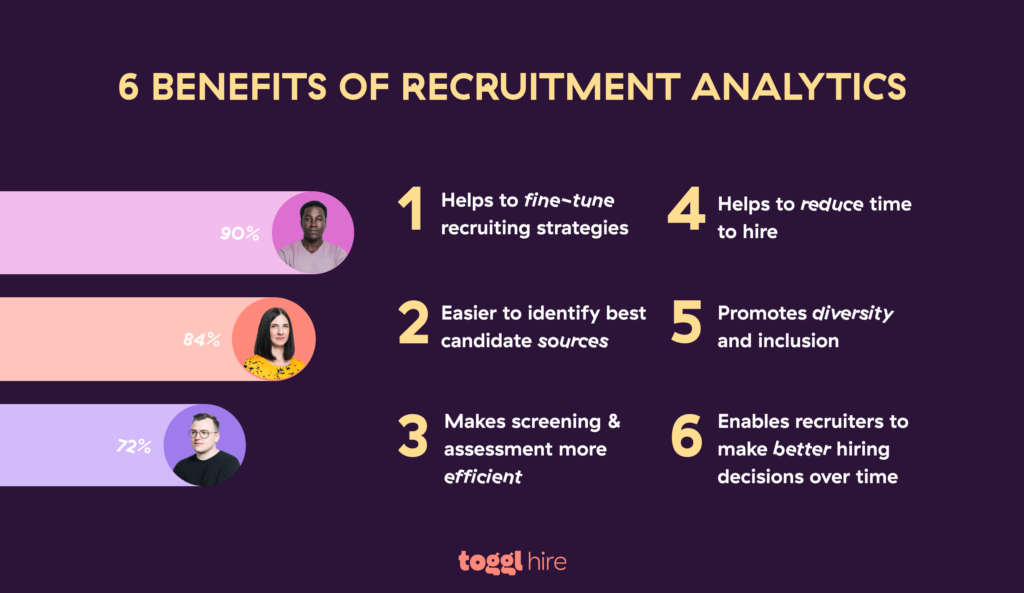
Recruiters today also rely on data analytics to help answer important questions, for example:
What is my time to hire?
What is our typical turnover rate?
How satisfied are employees after 3 months of being in the company?
How do our best candidates find us?
Essentially, recruitment analytics can help you figure out where to find the best people, how to test them, and how to make sure you’re being fair to everyone across every stage of the recruitment process, including:
The application
The assessments
The job interview(s)
Background and reference checks
The decision-making and extending an offer
For every stage, there are countless data points that you can collect to measure and analyze your hiring efforts. The key to success is knowing what to measure, how, and when. This is where we can help.
The 8 Different Types of HR Analytics
There are many different ways to cook the sauce. In recruitment analytics, you can measure just about anything, but before you do, it’s best to get familiar with the most commonly used different types of recruitment analytics. These include:
Descriptive analytics
Descriptive analytics in HR is all about describing what has happened in the past in order to learn from it and improve in the future. This type of analytics summarizes data from past recruiting processes to help you identify trends.
For example, you could use descriptive analytics to investigate why the average turnover rate for sales positions in your company is high by recording answers in exit interviews and hearing from hiring managers and team members what seems to be the issue.
Predictive analytics
Predictive analytics in recruitment uses the data gathered from historical analytics to make forecasts and predict future hiring outcomes. This type of analysis can help equip your hiring team with actionable insights to make better decisions in the future.
For example, historical data can be used to make forecasts about future hiring needs, potential problems, employee performance, typical career progressions, and more.
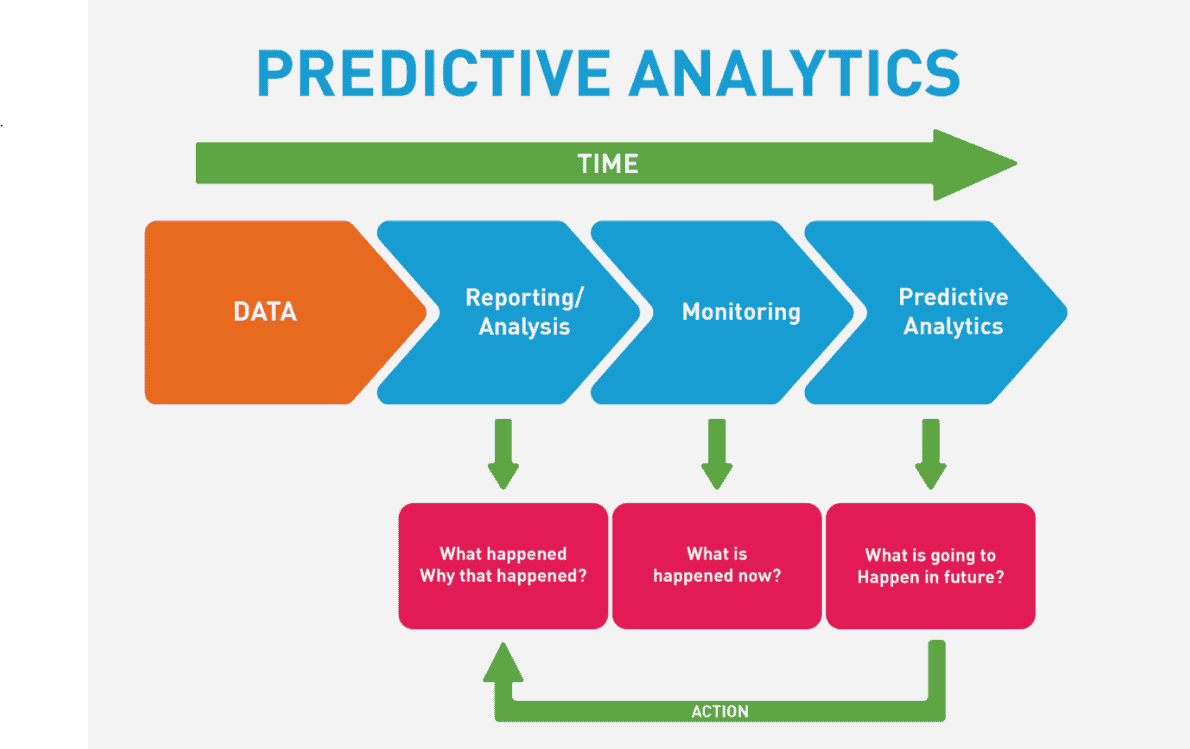
Prescriptive analytics
Prescriptive analytics takes predictive analytics in recruitment a step further. Based on your analysis of historical data and the predictions you make, you prescribe and create a plan.
This plan could prevent negative outcomes, such as problems filling a position or support positive outcomes, such as improving your acceptance rate. In any case, it’s about taking the data from predictive analytics and devising a plan for the future.
Workforce planning analytics
Workforce planning analytics focuses on analyzing HR data inside and outside your organisation, considering workforce demographics and other factors that may influence hiring decisions.
With proper workforce planning in place, you can know ahead of time which positions you need to fill, what challenges you may face, and what your recruitment funnel should look like.
Talent acquisition analytics
This recruitment analytics field is all about analyzing your recruitment efforts to optimize your talent acquisition efforts. It involves analyzing things such as different recruitment channels, your tactics (e.g. screening via resumes vs. assessments), and the quality of candidates you’re attracting, to name a few.

Employee engagement analytics
Just hiring great candidates is not enough. In order to retain those employees and keep hiring even more amazing people, you want to keep your engagement sky-high.
This part of recruitment analytics looks at employee satisfaction levels, motivation, alignment with company values and culture, aspirations for the future, and anything else that can help increase employee engagement.
Learning and development analytics
Are your employees learning on the job? Learning and development analytics takes a look at the success of your training programs and upskilling, as well as employee learning initiatives.
It analyzes the impact of training on how employees perform on the job, is used to help spot skills gaps, and in general, measures how training contributes to performance on the job.
The Research Institute of America concluded that e-learning boosts retention rates by 25 to 60 percent, compared to retention rates of 8 to 10 percent with traditional training.
Forbes
Retention analytics
Turnover can be the silent killer of any company if left unattended. Retention analytics aims to dissect your turnover and retention rates and to make predictions for the future.
It helps pinpoint items that lead to attrition, such as low levels of engagement, poor possibilities for job advancement, low learning opportunities, and more. With proper retention analytics, you can save your best talent from leaving and refine your hiring process.
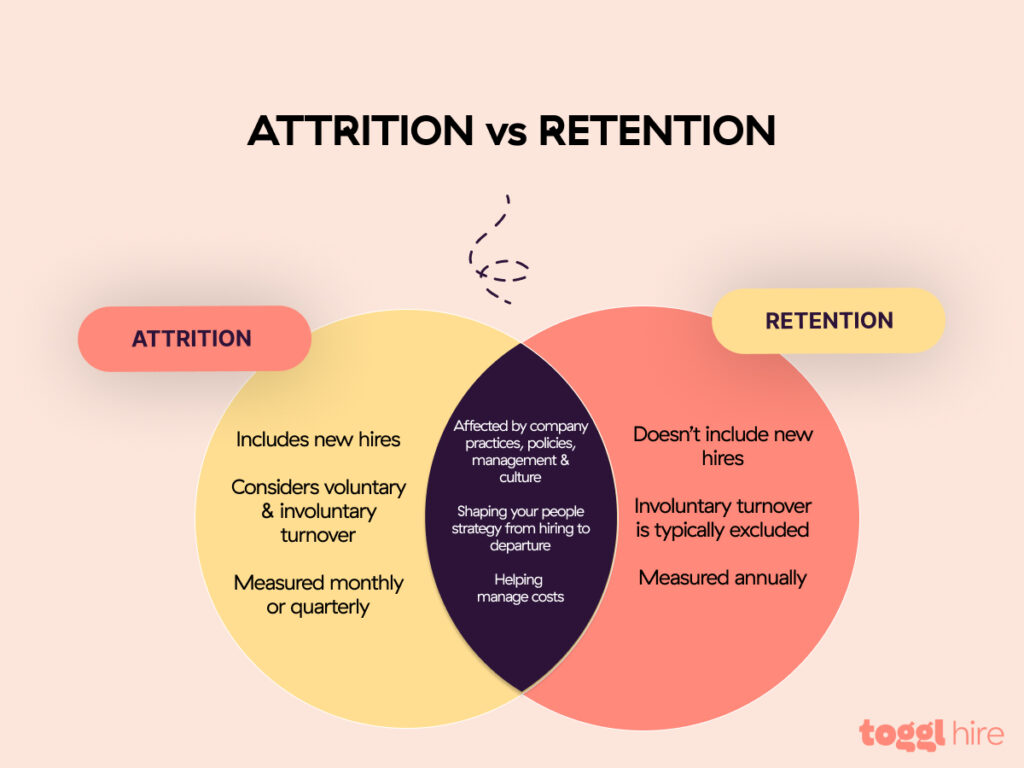
The role of data in recruitment: why is it important?
You may be able to trust your gut in some instances, but overall, recruitment decisions are better taken when guided by real-time data and numbers. Here are some more practical reasons why you should use data and analytics in your recruitment processes.
1. Better Quality Candidates
Recruitment analytics can help offer valuable insights into your key recruitment metrics. You’ll learn where your best candidates come from, what kind of qualifications they have, and ultimately, how to find more candidates like this.
2. More Efficient Hiring Processes
Armed with data, you can improve your hiring processes from start to finish. For example, you’ll learn how to shorten your time to hire, get a better cost per click from platforms like LinkedIn, improve your applicant-to-hire ratio, and more.
3. Reduction in Bias
Unconscious bias can often lead to poor hiring decisions. Instead of hiring someone because they have the right education or skillset on paper, try using data from skills assessments, for example, to hire qualified candidates with the best skills for the job.

4. Predictive Analytics
With data at your fingertips, you can even accurately predict your future talent needs. Thanks to using predictive analytics in your recruitment process, you’ll have a better idea of what you currently have and what you may be lacking in the future in terms of your workforce.
5. Improving Retention
To emphasize the scale of the issue of employee retention in the USA, a staggering 4 million Americans quit their jobs each month between July and November 2022, according to the US Bureau of Labor Statistics. By actively measuring and understanding your employees’ engagement, motivation, and aspirations, you can better retain your top talent and gain a competitive advantage in the market.
What type of recruitment data should companies be tracking in their hiring process?
Recruitment analytics plays a major role in the recruiting process. Taking into account all the different types of recruitment analytics available, as well as the recruiting software tools to help track them all, most companies today will track a mix of everything.
Instead of focusing on descriptive vs predictive or another type of analytics, it’s best to dial down on which individual recruitment metrics you want to track and improve. Here are some of the top ones hiring teams should consider:
Source of Hire: By figuring out a pattern of where your best candidates come from, you can double down on those channels in the future. For example, job boards could be a total miss for you, but you could get amazing candidates from social media paid ads.
Time-to-Fill: This metric tells you how much time it takes from when you post a job ad to when a candidate accepts your offer. The lower it is, the better, so keeping a pulse on it is crucial for your hiring process.

Cost-per-Hire
This includes the total costs associated with making a new hire, from posting the job ad to the interview costs and the salaries for your HR team. Naturally, you want to optimize and lower it as much as possible.
Quality of Hire
How you quantify this metric will vary according to what success looks like for each specific role. A more general way to think of it is a combination of candidate performance, retention rate, and overall company and culture fit.
Candidate Experience
When you measure the job seekers’ feedback on your hiring process, you can get an objective viewpoint on what works and what should be improved. Focusing on the candidate experience can help to boost candidate conversions and avoid a bad onboarding process.
Candidate Conversion Rates
There is a conversion opportunity within each step of the hiring process – from applying after seeing the job ad all the way to accepting an offer. You can easily calculate the conversion rate between the steps by analyzing the number of candidates progressing to the next step.
Candidate Drop-off Points
Use this metric to identify bottlenecks where your candidates drop off. For example, your interview process could be too tedious, or your offer not in line with candidate expectations.
Diversity Metrics
If you want to reduce hiring bias, it’s worth checking up on your diversity metrics. Make sure you’re hiring from diverse backgrounds and not getting an army of yes-men of roughly the same age, background, or looks.
Employee Retention
Every workplace should keep tabs on how long they retain their employees. If people keep leaving, this not only means that something is broken inside the company, but you’re also going to spend even more money hiring their replacement.
Performance of Hiring Channels
This metric will help you evaluate the success of specific channels, e.g. LinkedIn or hiring fairs, in bringing you good candidates. This is a great way to find meaningful patterns and enrich your talent pool in the future.
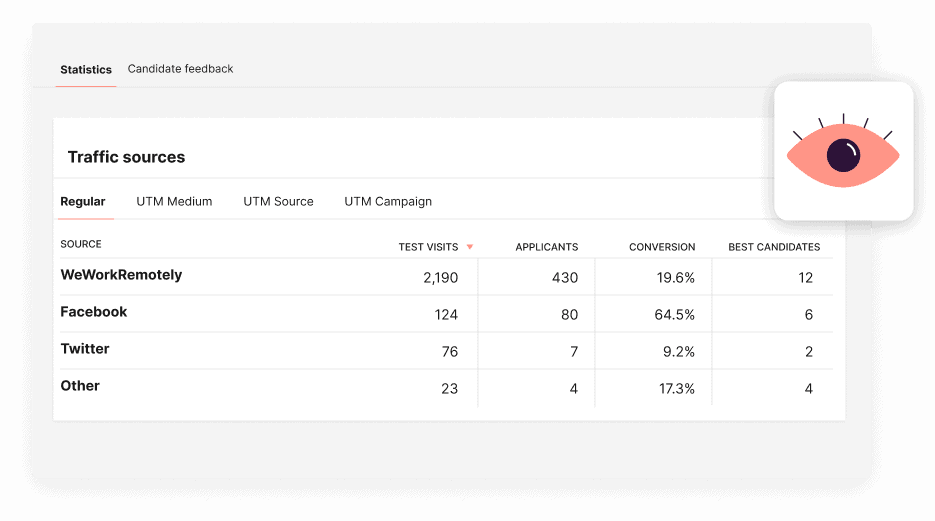
Interview-to-Offer Ratio
This metric can tell how good you are at choosing the right candidates for job interviews. Ideally, you want this ratio as close to 1:1 as possible, which means that you’re inviting top-tier candidates to the interview stage.
Offer Acceptance Rate
Every HR department wants to have their offer acceptance rate high – it shows that you have great offers and a culture that is inviting for top candidates. Once again, the higher the rate, the better. And by nailing your employer branding, you can further increase your chances of an accepted offer.
How do HR departments track data in the recruitment process?
Unless you’re supernatural, keeping track of all of these metrics manually is not a viable option. Today’s HR professionals use a variety of different and sophisticated tools and platforms to measure everything related to their hiring processes.
Let’s take a look at some of the core platforms, systems and apps that you’ll need:
Human Resource Information Systems (HRIS)
HRI systems store information on everything related to HR, providing an all-in-one HR solution. HR professionals use these HRIS to store, manage, and track recruitment data on payroll, compliance, employee performance, and more. And is primarily used for advanced reporting, tracking trends, and making hiring predictions.
Notable HRIS apps include: BambooHR, Deel, Gusto, Zenefits and Factorial.
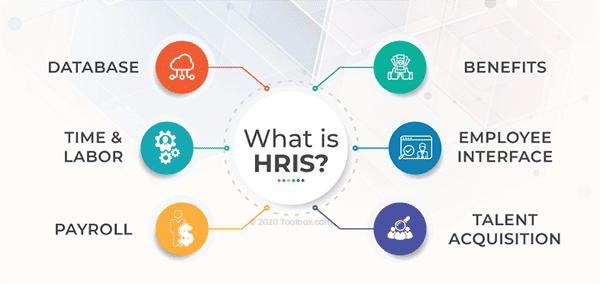
Applicant Tracking Systems (ATS)
An applicant tracking system helps to track candidates throughout the recruiting funnel by storing relevant key information about your candidates, such as their resumes, interview notes, and assessment results.
ATS are useful for effectively managing your candidate pool, keeping track of multiple candidates and hiring needs, and providing actionable analytics and reports on your hiring funnel.
Notable ATS applications include: JazzHR, Greenhouse, BreezyHR, Workable, Recruitee and RecruitCRM.
Skills Assessment Platforms
Skills assessment platforms allow you to test your candidates’ skills by giving them a task (or set of tasks) relating to the job. They help you determine which potential new hires can actually do the job vs what they say they can do.

Notable skills assessment tests include: Toggl Hire talent assessments. With Toggl Hire, recruiters can choose from a Library of expert-crafted Skills Tests or create a custom test in minutes. Skills tests offer rapid feedback on performance, making it an effective means for pre-screening talent and a great example of recruiting analytics at play.

Performance Management Systems
These apps essentially track what your employees are doing and how successful they are at meeting their goals. You can use them to set goals, add training sessions, monitor their completion, undertake performance reviews, and more.
Use the data to track individual and team performance and refine your recruiting analytics and your hiring process.
Notable performance management systems include: Leapsome, Lattice, Hibob, Paycom, and PerformYard.
Surveys and Feedback Tools
In addition to meeting all your HR survey needs, these tools can also be used across your marketing, sales, and customer support teams. You can use surveys and feedback tools to get information from employees directly from the source, to ask them about their engagement, and gather feedback.
Leverage this data to refine your recruitment funnel and address important concerns in your company.
Notable survey and feedback tools include: Jotform, Survicate, Typeform, SurveyMonkey, SurveySparrow, and LeadQuizzes.
Time and Attendance Systems
For most companies, you need a system for managing various types of absences, time off, and different work schedules. Time and attendance tools allow you to effortlessly monitor employee attendance, days off, overtime and everything else related to time spent at work. But most importantly, having this recruiting analytics data handy means you can also run analysis and better calculate payroll and benefits.
Notable time and attendance tools include: Toggl Track, Clockify, Unrubble, Timely, and Paycor.
Exit Interviews and Offboarding Surveys
When employees leave, it’s important to find out why. Exit interviews and offboarding surveys are the most common ways that HR professionals evaluate why candidates drop out.
Surveys can provide qualitative and quantitative feedback on employees’ reasons for leaving and help you spot trends, improve employee engagement, and figure out how to retain your best talent in the future.
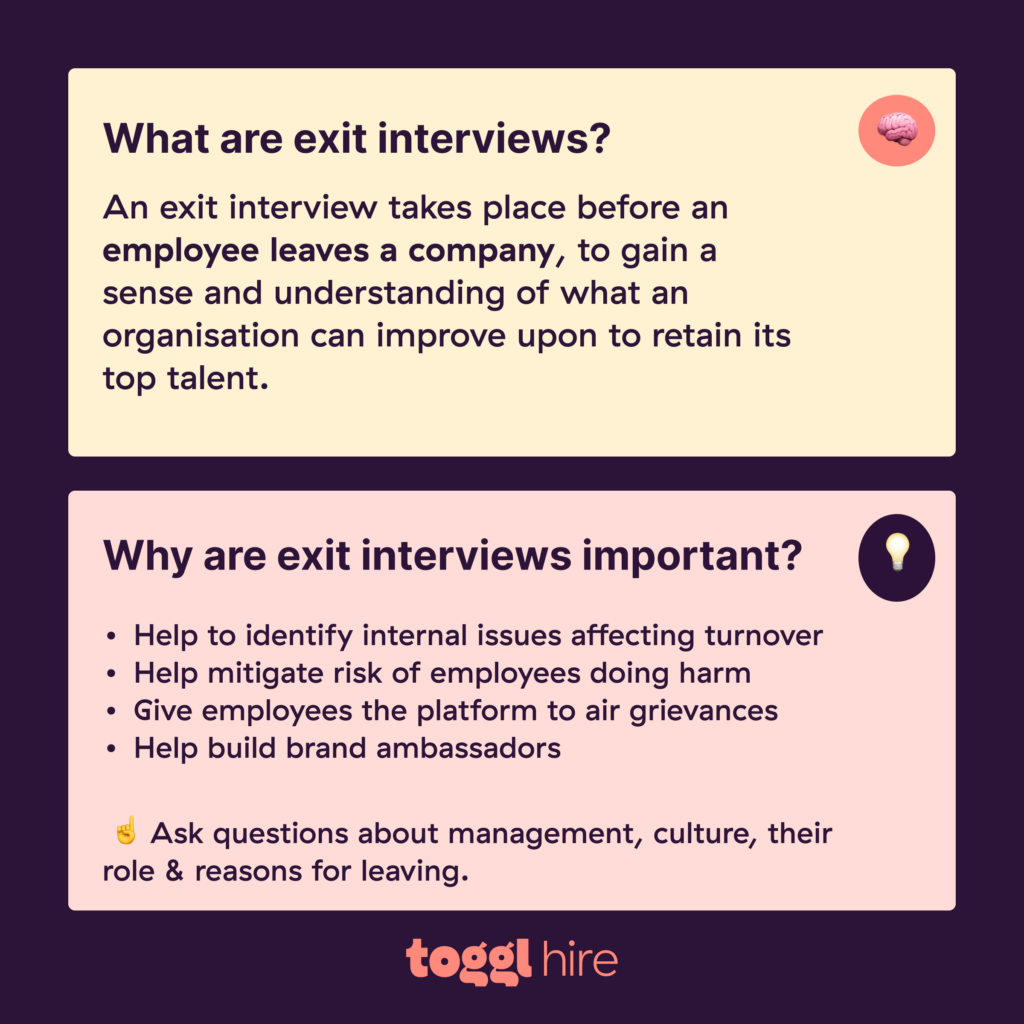
Notable offboarding tools include: Qualtrics, SurveyMonkey, SurveySparrow, and ExitRight.
Compliance and Reporting
There are also tools to help ensure that you’re complying with the law and track data related to that compliance. This includes a variety of metrics regarding diversity and inclusion, equal employment, and more.
This data based on operational reporting is necessary not just for internal purposes but also in the case of an external audit.
Notable compliance and reporting tools include: Zenefits, Deel, GoCo, Accenture, intelliHR, and Paycor.
5 practical examples of how recruitment analytics come in handy
If you’re looking for some inspiration on how to use recruiting analytics in your everyday job, you can get some actionable insights from these examples.
#1 – Improving Quality of Hire
Listonic was able to improve the quality of hire and remove hiring bias by doing skills tests before reviewing resumes and candidate profiles. They realized that the quality of hire was much better if hiring managers first saw the skills test results and then everything else.
#2 – Reducing Time-to-Hire
Monese was able to cut down their time to hire by 86% with recruiting analytics. They did this through several different approaches. Primarily, they used data analysis to figure out that with hiring 15-20 new people per month, their hiring managers needed something quicker. With Toggl Hire, the problem was solved.
#3 – Enhancing Candidate Experience
Telia was able to improve their candidate experience and engage future hires by gamifying the experience. They placed a test for students (and potential employees) at their career fair and were able to attract people who are usually wary of technical tests.
#4 – Predicting Hiring Needs
Predicting your business cycle and hiring needs is tough. However, if you run a seasonal business that has spikes, predictive analytics can very accurately help you determine when you need more people – and how many. For example, the retail industry is usually busiest around holiday times. Predictive analysis can help anticipate these spikes, so you can find and hire people in time.
#5 – Refining Job Descriptions
There are tools in the recruitment industry built specifically for creating better job ads. Such is Textio. Their customer Zendesk used recruiting metrics related to job ads to improve representation. This type of recruiting analytics lets you take any job description, making it fairer and more inclusive.
Master your hiring analytics with skills testing
Recruitment analytics isn’t just a necessity for HR teams wanting to measure and improve their hiring efforts; they’re a competitive advantage.
The market is full of tools, platforms, apps, and fancy recruitment analytics software to help you keep track of all the moving parts of your hiring process. Statistical analysis and new technologies like machine learning take it a step further, all working together to help you find the most qualified candidates by analyzing data.
And it all starts with narrowing down your applicants. Skills testing can save you valuable time, narrowing down your talent pool faster and more effectively than any CV screening software.
Put your gut feelings to the test and grab your Toggl Hire account to hire based on tangible skills.
Juste loves investigating through writing. A copywriter by trade, she spent the last ten years in startups, telling stories and building marketing teams. She works at Toggl Hire and writes about how businesses can recruit really great people.






